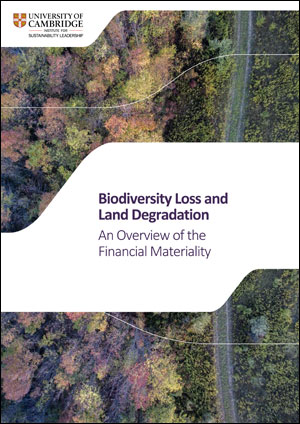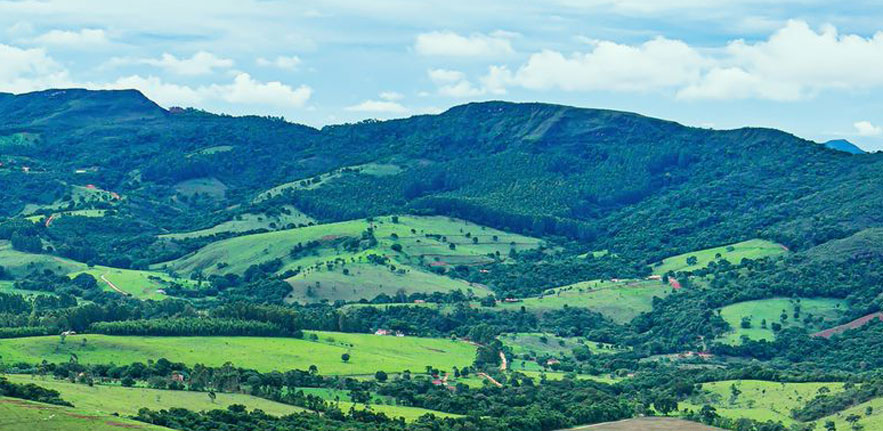May 2020 – The University of Cambridge Institute for Sustainability Leadership (CISL) has published a new briefing document mapping the existing methods and tools that can be used to derive the materiality of biodiversity loss and land degradation.
Context
The deterioration in biodiversity and land quality is exacerbated by climate change and accelerating towards irreversible tipping points. With an estimated US$ 44 trillion of annual economic output reliant on nature, the acceleration of biodiversity loss and land degradation towards these tipping points holds catastrophic economic consequences, as well as for nature and society.
How is the financial materiality of nature loss quantified?
These briefs summarise why biodiversity loss and land degradation matter and the ways that materiality has acquired a monetary value. As such, they not only seek to explain how each is financially material but the existing methods and tools for mapping that materiality.
Key points
Methods for quantifying the extent to which biodiversity loss is financially material can be based on:
- The cost to restore biodiversity
- The volume of biodiversity finance
- Totalling the value added to the economy of industries qualitatively assessed to be dependent on nature
Some tools exist to understand the impact on biodiversity of business, but these are context dependent. An equivalent number of tools are not available for mapping dependence on the services biodiversity provides.
On the other hand, the financial materiality of land degradation is better mapped. This is broadly because lower land productivity has long received attention. Methods for appreciating the financial materiality of land degradation include:
- Productivity calculations: highlighting cash flow risks to agriculture and forestry of suboptimal yield
- Resilience value: quantifying the cost of drought, flood, etc. that could have been avoided if land was not degraded
Next steps
These briefings were the first public papers from the wider CISL programme on nature-related financial risks.
Findings informed the development of a handbook of nature-related financial risks, which includes a framework for identification.
Using the Handbook, CISL conducted five use cases with members of the Banking Environment Initiative and Investment Leaders Group to support further assessments by other financial institutions. These use cases quantify and assess specific nature-related financial risks, with each limited to a particular geography, risk type and sector and demonstrate the financial materiality of nature loss.
The materiality of the financial risks demonstrated also form the backbone for a new report Integrating nature: The case for action on nature-related financial risks. In this paper, CISL calls on finance leaders to act now to integrate nature into decision-making in order to manage nature-related risks and drive investment that protects and restores nature.
Citing this briefing document
University of Cambridge Institute for Sustainability Leadership (CISL 2020). Biodiversity Loss and Land Degradation: An Overview of the Financial Materiality
Authors
The authors of the report were Grant Rudgley and Dr Nina Seega at the CISL Centre for Sustainable Finance. The team was supported by Dr Cath Tayleur, Annabel Ross and Lucy Auden at CISL.
Acknowledgements
CISL would like to thank members of the Banking Environment Initiative and Investment Leaders Group for their support.

 Download Biodiversity Loss and Land Degradation: An Overview of Financial Materiality
Download Biodiversity Loss and Land Degradation: An Overview of Financial Materiality





